Volume 16, Issue 2
Displaying 1-10 of 10 articles from this issue
- |<
- <
- 1
- >
- >|
-
2001Volume 16Issue 2 Pages 123-129
Published: December 25, 2001
Released on J-STAGE: September 20, 2011
Download PDF (1026K) -
2001Volume 16Issue 2 Pages 131-138
Published: December 25, 2001
Released on J-STAGE: September 20, 2011
Download PDF (1107K) -
2001Volume 16Issue 2 Pages 139-143
Published: December 25, 2001
Released on J-STAGE: September 20, 2011
Download PDF (1051K) -
2001Volume 16Issue 2 Pages 145-147
Published: December 25, 2001
Released on J-STAGE: September 20, 2011
Download PDF (486K) -
2001Volume 16Issue 2 Pages 149-152
Published: December 25, 2001
Released on J-STAGE: September 20, 2011
Download PDF (512K) -
2001Volume 16Issue 2 Pages 153
Published: December 25, 2001
Released on J-STAGE: September 20, 2011
Download PDF (138K) -
2001Volume 16Issue 2 Pages 154
Published: December 25, 2001
Released on J-STAGE: September 20, 2011
Download PDF (95K) -
2001Volume 16Issue 2 Pages 155-160
Published: December 25, 2001
Released on J-STAGE: September 20, 2011
Download PDF (568K) -
2001Volume 16Issue 2 Pages 161-182
Published: December 25, 2001
Released on J-STAGE: September 20, 2011
Download PDF (3427K) -
2001Volume 16Issue 2 Pages 194
Published: 2001
Released on J-STAGE: September 20, 2011
Download PDF (26K)
- |<
- <
- 1
- >
- >|
